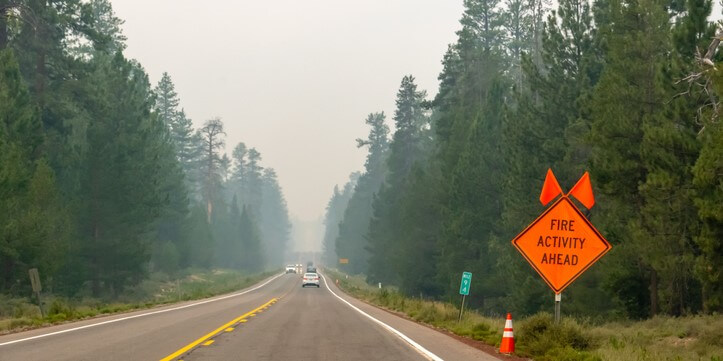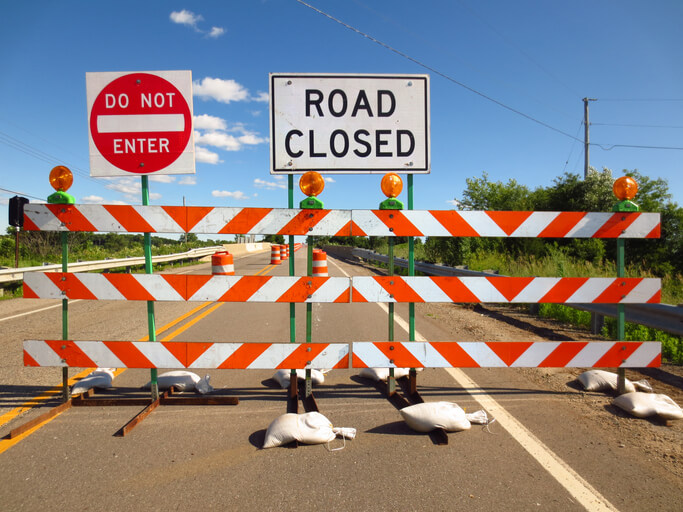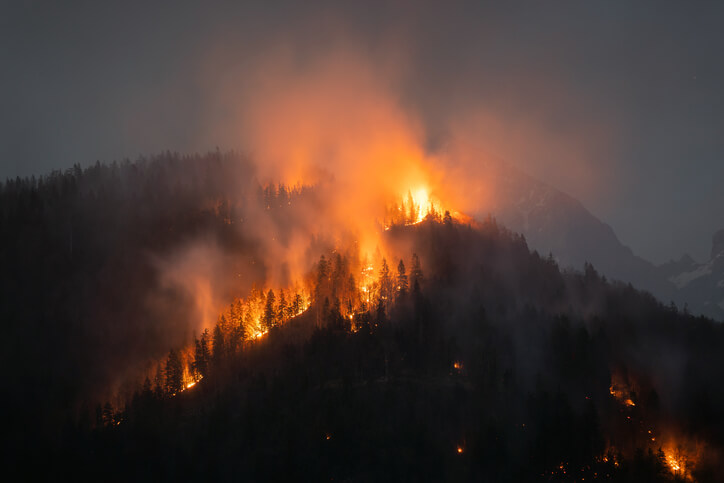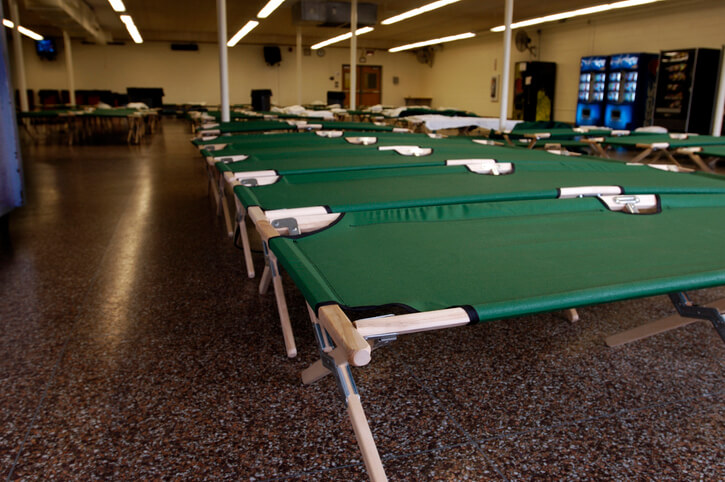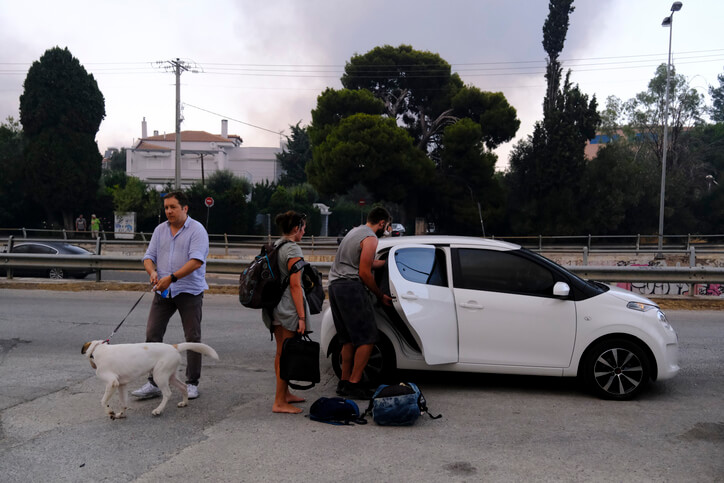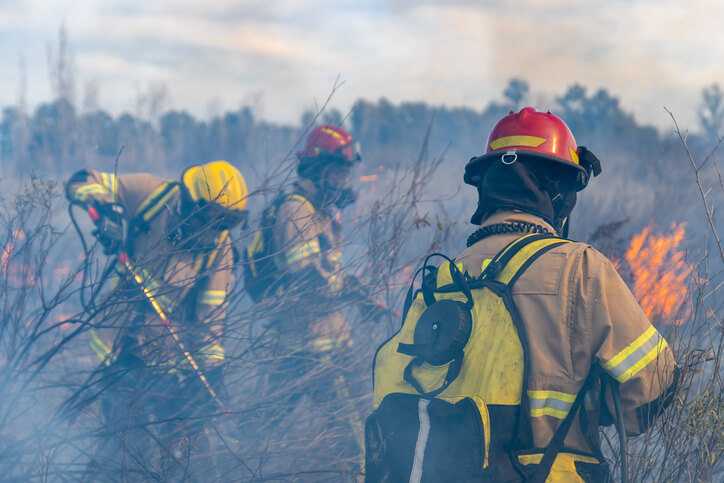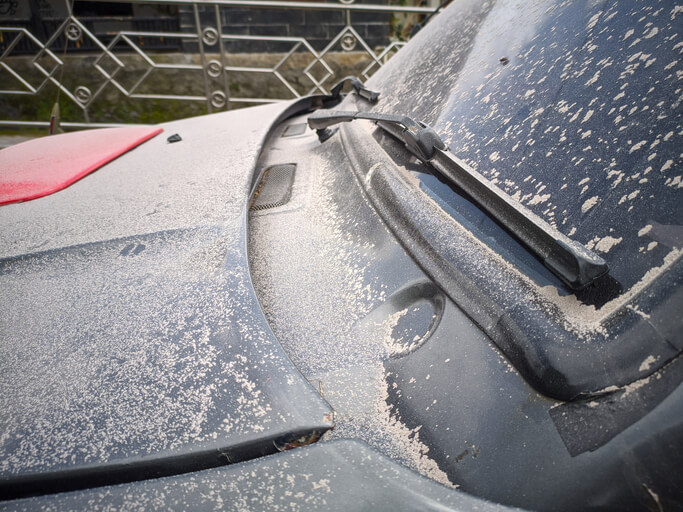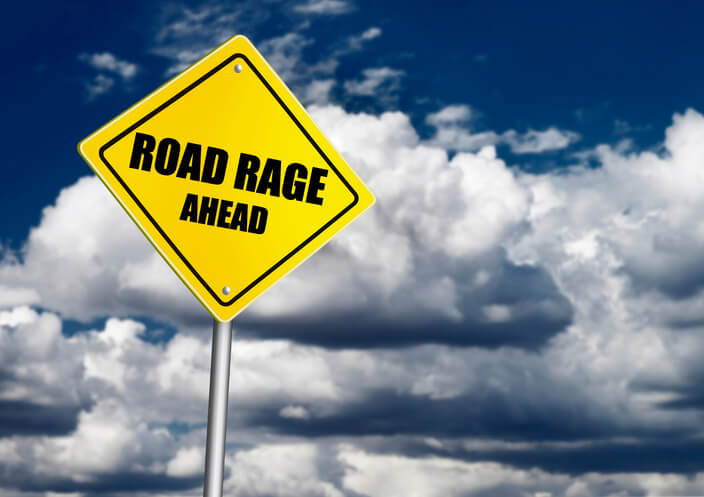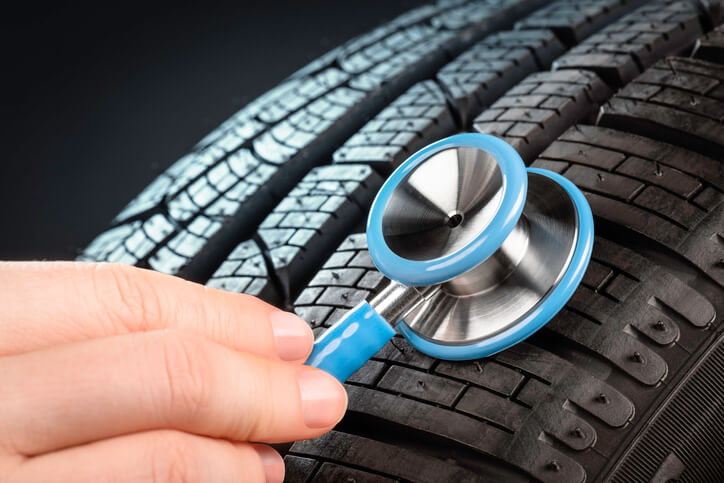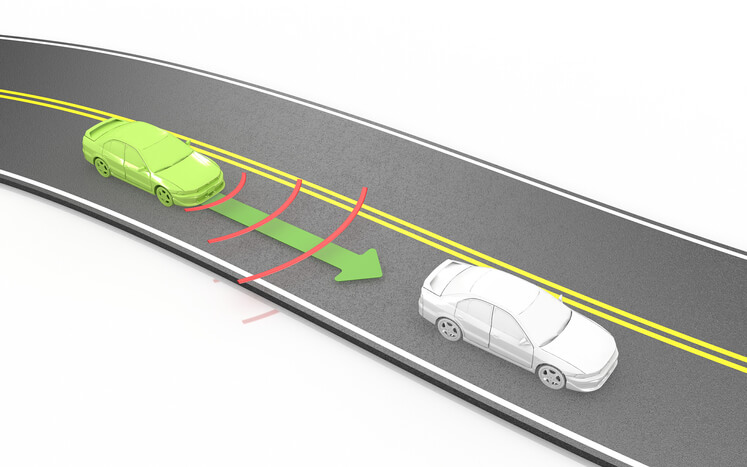Driving in an area that is being ravaged by wildfire can be tricky, dangerous, and emotionally unsettling. This is especially true if you’re assisting with evacuating both yourself and others. Here is what you need to know to be able to drive safely during this kind of natural disaster.
Status of the Incident
Fire can move fast and is very unpredictable. The local news station (online, television, or radio) can be a good source of information about the extent of the fire; however, the best information will be found on official fire department websites, which show maps which include the affected area, road closures, and shelters.
Be aware of the size of the fire and which direction it’s moving. Remember that wind can not only push a fire in a certain direction very quickly, but it can also lift embers and send them a distance away, which may start new fires. Fire can jump freeways and fire breaks. A location which seems safe may not be if conditions change, so pay attention to updates and always check often. If you’re in an evacuation area, start preparing to leave. We’ll talk about that more below.
Road Closures
In rural areas especially, roads may be closed to all but emergency vehicles and residents. If you’re a resident, make sure you have your identification so you can prove that you live in the area. If you’re helping someone who is evacuating, have the exact address and how long you’ll be there assisting. This information will help emergency personnel know how many people are still in the area of immediate threat.
If roads are closed and you can find an alternate route, take it, but be patient because it’s possible that everyone else is doing the same thing. Fleeing a fast-moving fire can be stressful and frightening. However, if you can stay calm, have a plan, and follow that plan, you’ll be in a better position to come through the incident safely.
If roads are closed and you can find an alternate route, take it, but be patient because it’s possible that everyone else is doing the same thing.
Fleeing a fast-moving fire can be stressful and frightening. However, if you can stay calm, have a plan, and follow that plan, you’ll be in a better position to come through the incident safely.
If you need to share the road with fire department apparatus, remember that they have the right of way and priority. You absolutely must follow their directions and instructions. Understand that road conditions may be hazardous because of water and debris. Drive slowly through any area that has emergency service personnel and be prepared to stop, reverse, detour, or turn around if they indicate you should do so. Be patient and courteous because these people have a very dangerous job to do and everyone has the same goal in mind: save lives, protect property, and minimize risk.
Evacuation
Listen to emergency channels and understand the current status of the fire. Load emergency supplies and must-have items in your vehicle so you can leave quickly. FEMA recommends the Five Ps of Evacuation: People, Prescriptions, Papers, Personal Needs, and Priceless Items. If possible, write this list down and use it as a checklist to make sure you have all of the items you need. Evacuate immediately if either the order is declared or you’ve been told to do so.
Routes
Think about where you are and where you need to go. In urban areas, you will want to leave as early as possible in order to avoid being caught in a rush of evacuees and emergency vehicles. If you’re in a rural or mountain area, understand that the roads may be narrow and sometimes one-way. If the wildfire is close, emergency personnel may be directing traffic or controlling access. Be patient and follow the directions of these officials. Stay calm and alert for hazards.
Destinations
Local emergency management may open shelters for evacuees. Before you decide to go to an emergency evacuation shelter, understand what they provide and what restrictions they have. For example, they may provide access to on-site physicians, but not accept small pets.
If you will not be going to a local shelter, have a destination in mind and, if possible, call ahead to make reservations or otherwise ensure they know to expect you and when you plan to arrive. This is also the time to reach out to your out-of-state emergency contact and let them know your plans, including your route and destination.
As soon as you’re clear of the immediate danger, you can stop to rest. Calm yourself and anyone who may be upset, panicked, or fearful. Reach out and let people know you’re safe. Take the opportunity to eat and hydrate. This will help you keep a calm, clear head.
Evacuating with house pets and large animals
If you have horses or other animals that need to be evacuated, make sure that you practice your evacuation route using your horse trailer or hauler. Check to make sure that it’s compatible with the road’s width and grade on each potential exit route from your home. A stuck trailer could prevent others from using the same path to safely evacuate.
Most evacuation centers cannot accept animals (service animals are permitted). Contact your local fairgrounds, stockyards, equestrian centers, and/or friends about their ability to shelter animals in an emergency.
Excellent advice from IdahoFireWise.org includes the following:
-
Hitch up trailers and park all vehicles facing the direction of escape. Put emergency kits into vehicles and LEAVE KEYS in the IGNITION.
-
Ready your animals. At the earliest signs of a wildfire, your pets should be brought inside and/or kenneled and other animals brought into barns, pastures, or coops. Once an evacuation notice is issued, put pets in individual carriers and load larger animals into trailers.
-
Birds, rodents, and reptiles should be transported in cages. Cover kennels and cages with a light cloth to minimize fear.
-
Contact the neighbors. Check with neighbors to see if they need assistance and tell them when you’ll be leaving and where you’ll go.
Driving Through Smoke
Smoke is going to be one of the most visible and dangerous parts of the wildfire that you, as a motorist, will be dealing with.
Experts have these recommendations:
-
Smoke can quickly change direction and density. It’s best to avoid these areas altogether, if possible. Consider taking a different route to your destination – one that completely avoids the affected area.
-
Know the current road conditions and the potential risks of the area, before you begin your drive.
-
Keep all windows, mirrors, and headlights clean to ensure the best visibility, since smoke and dust can buildup and cause your vision to be slightly impaired.
-
Drive slowly and remain three car lengths behind the car in front of you. The smoke can be very dense, which makes it difficult to see in front of you. Allow enough time and room to brake if need be.
-
Always keep your windows rolled up while driving near wildfires and smoky areas.
-
Turn on your headlights if visibility is impaired, but do not use your high beams, since these may distract surrounding motorists.
Driving Through Burn Areas
Avoid driving through areas where there is active fire close to roads, or where smoke obstructs your vision. If you need to pass through active burn areas to evacuate, stay as far as safely possible from any flames close to the edge of the road. Be sure to keep your headlights on and drive slowly through areas where there is low visibility.
Once out of the smoke area, open the windows and allow fresh air into the vehicle. Remember to have your air filters checked, cleaned, or replaced because they may have been clogged with ash.
Staying clear of emergency vehicles
All emergency vehicles have right of way during wildfire response. Give fire apparatus and equipment room to maneuver. Remember that US Forest Service fire trucks are green, and if equipment is coming in from other counties or states, they may be red, yellow, or white. Always watch for the flashing red lights which indicate official emergency vehicles. In addition, firefighting apparatus may also include hired equipment such as bulldozers and water tankers.
Do NOT position your vehicle to block access to a road or driveway.
Do NOT leave your vehicle blocking a roadway, especially on narrow roads. Pull off to the side or into a driveway.
During high risk fire danger days, make sure to keep narrow streets clear of vehicles and objects such as trash cans or other items that could get in the way of a fire truck.
If you must drive around firefighting equipment, do so very carefully and be prepared to stop immediately or back up if necessary.
Watch for firemen and other emergency personnel, especially ones wearing breathing equipment which limits their peripheral vision, and in areas where blowing smoke could obscure them from your view.
Reporting flare-ups and hot spots
If you’re driving through an area which had previously burned and you see a flare-up or active burn without fire personnel attending it, be sure to note the location and call it in. Remember that some objects like logs and structures may still be smoldering and emitting smoke. However, if you see flames, that would be something that needs to be reported as soon as possible.
What to do if you become trapped in your vehicle
The Ready.gov website has this to say about being trapped in your vehicle or outside:
“If you are in a vehicle, base your decision to stay in the vehicle or to take cover outside on your specific circumstances, including your distance from the fire, the direction of the fire, whether there is fuel (e.g., brush and trees) near your vehicle, and the potential for rescue. Try to stay away from fuel sources; stay in a rocky area or roadway, or near a water source. Stay low to reduce the effects of heat and smoke, breathe through cloth to avoid inhaling smoke, and cover yourself with a wool blanket or coat, or even dirt. If you are trapped by the fire, immediately call 911, if possible, to provide your location and explain your situation.”
Dealing with Ash on Your Vehicle
When the smoke gets particularly bad, wildfire ash may start to fall. When it collects on your car, it can cause a problem. It may be tempting to try and wipe the ash off, but doing so could scratch the paint.
If you only rinse your car off with water, it may release chemicals that are bad for the paint. Instead, thoroughly wash your car with soap and water. Using a wax afterwards can help protect your paint in the future.
Wait until the wildfire smoke has cleared to clean the ash off your car. And if you use a blower, you’ll just spread the ash around.
To Summarize Driving During Wildfires
-
Slow down: Practice good defensive driving and give people around you time to respond. You will never regret driving too slow.
-
Roll up the windows: This should be common sense, but keep the windows up and use the feature to recirculate the air so that dirty air from the outside isn’t funneled in.
-
Drive predictably: Driving predictably when there’s decreased visibility is very important. Avoid slamming on the brakes, and always use your turn signals. Don’t tailgate.
-
Don’t use your hazards: While it may seem like a good idea, at slow speeds and low visibility, it may appear that you are stopped on the road.
-
Avoid driving: If you know a certain area has particularly bad smoke or low visibility, try to avoid it. Check weather reports and TV news to see where the conditions and traffic are the worst.
-
Turn on your headlights: Even in the middle of the day, having your headlights on allows other drivers to see your car more easily. At night, use your low beams and turn on fog lights (if possible).
-
Watch for livestock and wildlife: In rural areas, wildfires and smoke may have forced animals onto or near roadways.
-
Watch for emergency vehicles: Slow down and move over to pass.
-
Evacuate early: The sooner you can leave an area threatened by fire or affected by smoke, the easier it will be to travel through safely.
-
Pull over: If the conditions truly are so bad that you feel unsafe driving, pull completely off the road and turn on your hazards. Remain in the car and try and contact help.
-
Pack food and water: If you are driving through a particularly bad stretch, bring enough provisions for you and everyone in the vehicle. Allow plenty of time to reach your destination.
Liam Hoch researches and writes about safe driving for DriverZ.
Having been a passenger in multiple near-catastrophic vehicle collisions, Liam knows first-hand the dangers of distracted, reckless, and unsafe driving.
Passionate about our core principles of helping to make safer drivers and, ultimately, saving lives, Liam stays at the forefront of driving safety innovation and research.


